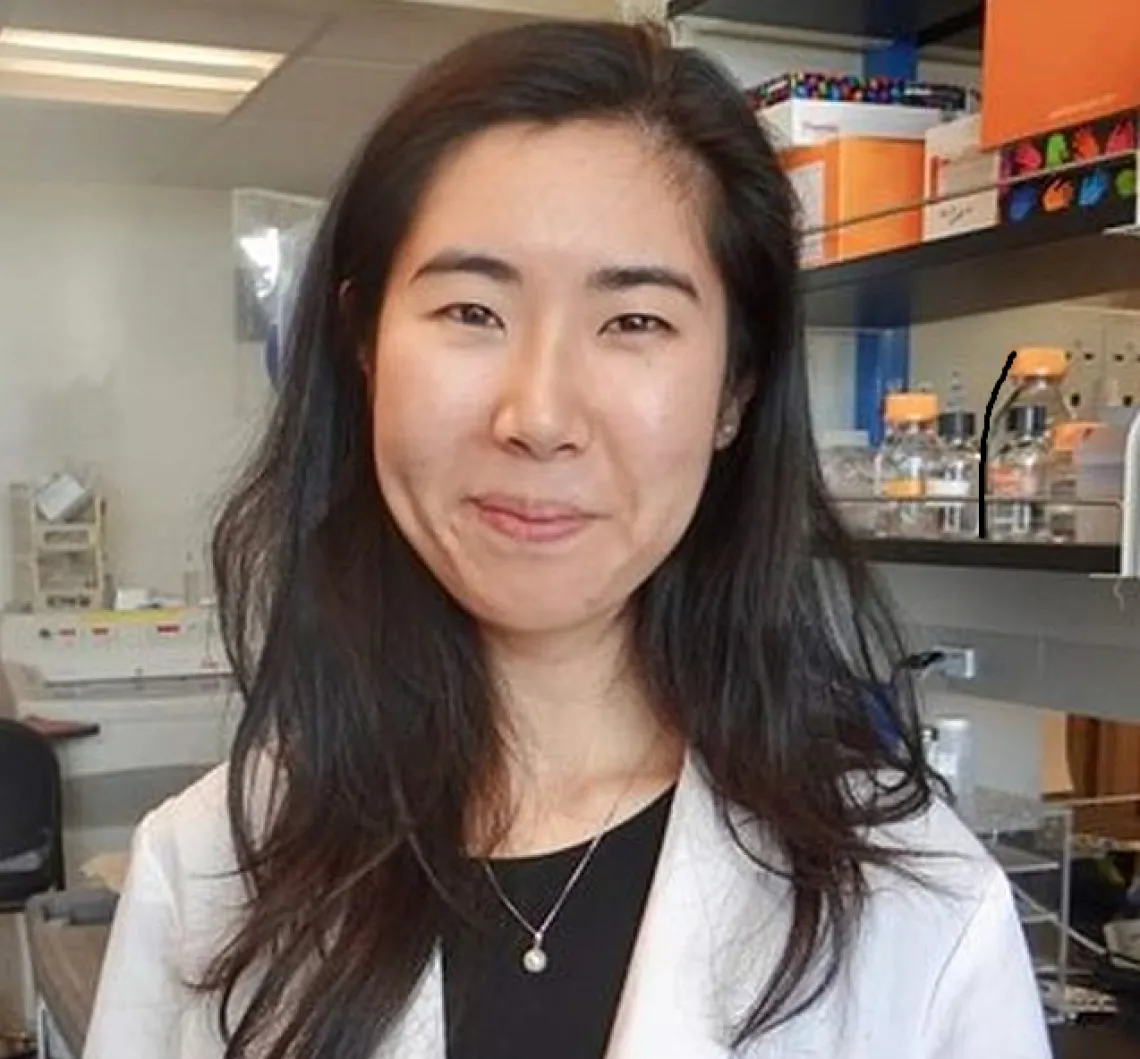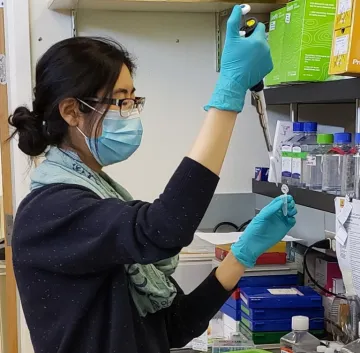Meet Dr. Duan!

Dr. Suzann Duan is dedicating her career to solving the mystery of how cancers arise in the stomach, intestine, and pancreas. Dr. Duan, who has been working as a postdoc with Dr. Juanita L. Merchant at the University of Arizona Cancer Center (UACC) since 2019, uses a multifaceted approach to understand gastrointestinal disease by studying the mechanisms behind normal and pre-cancerous changes that lead to a type of cancer called gastroenteropancreatic neuroendocrine tumors (GEP-NETs). GEP-NETs comprise an interesting group of rare tumors that can secrete hormones and display neural features. While uncommon, there has been a notable increase in the incidence of GEP-NETs over the last five decades and patients carrying specific genetic mutations are at a higher risk of developing these tumors. GEP-NETs are known to be ‘immune deserts’ whereby immune cells are not found or excluded from the tumor, an unusual finding in cancer. This phenomenon renders immunotherapy for this disease ineffective while adding further motivation and intrigue to Dr. Duan’s work.
Currently, Dr. Duan is working to answer three distinct research questions with a variety of lab techniques. Her first goal is to develop a mouse model of human gastrinoma tumors, a type of GEP-NET. “The rare occurrence of this [gastrinoma] disease coupled with there being no available mouse model makes it difficult to study its underlying mechanisms.” Dr. Duan explains. “My project is focused on creating a gastrinoma mouse model through the manipulation of genetic and environmental factors, achieved by gene knock-in and knock-out, in addition to delivery of proton pump inhibitors.” The Merchant Lab is focused on a specific genetic mutation in humans that contributes to the formation of these tumors, and they hope to recapitulate this disease in mice by eliciting similar mutations, a lengthy and difficult process.
Along a similar line of inquiry, Dr. Duan is working to determine how certain DNA mutations in patient GEP-NET samples alter cell biology and function and potentially resulted in formation of the tumor. “A lot of this work is being done using established cell lines. We sequence DNA from blood and tumor samples and identify the presence of germline and acquired mutations. Because these mutations are only occurring in the tumor it suggests that the gene is being changed in the tumor itself.” Dr. Duan continues, “We insert these mutations into an artificial DNA construct, in our case a plasmid, and introduce the mutations into different normal and tumor cell lines to have them produce the mutated proteins. We can then study how the cell lines respond and how that protein’s interactions change because of the mutations.” Understanding links between gene mutations, faulty protein formation, and tumor development are important aspects towards developing therapies for this disease.
Dr. Duan is also investigating signaling outside of these tumor cells which are believed contribute to their growth. Dr. Merchant’s lab has identified inflammatory markers that are elevated in GEP-NETs, which is counterintuitive to the lack of immune cells present that would normally release these signals. Dr. Duan is using patient-derived organoids to study where these inflammatory signals are arising, how they contribute to tumor growth, and potential methods of leveraging this understanding to improve therapeutic outcomes. “Identifying the origins and pathways that underlie malignancy is critical for us to develop personalized molecular biomarkers for earlier diagnosis and [to] identify novel therapeutic approaches,” Dr. Duan explains.
Her fascination of cancer biology inspired Dr. Duan to become a postdoc and she envisions herself eventually running her own cancer research lab. Dr. Duan describes a patient-oriented motivation to her work, “Ultimately, the goal is to leverage all of the tools available to us to improve patient outcomes.”
When she comes across some free-time, Dr. Duan creates delicious baked goods or enjoys time outdoors, either running, hiking, or backpacking in areas around Arizona or back in her hometown of Reno, Nevada.

